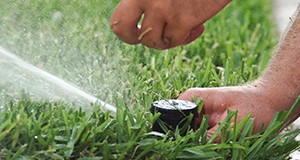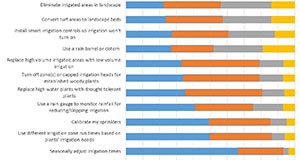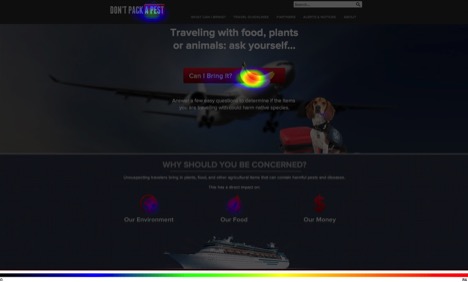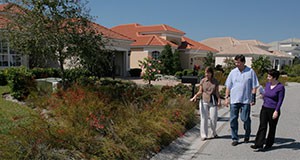
This 4-page fact sheet is the seventh publication in a series focusing on encouraging water conservation among Florida residents who use irrigation in their home landscapes. Extension educators create programs to encourage good irrigation practices and water conservation activities based on personal and social normative beliefs. To help in this goal, the authors examine personal and social norms of Florida residents who use irrigation in the home landscape and describe how Extension educators can capitalize on these positive norms to motivate Floridians to learn and use best water conservation practices. Written by Anil Kumar Chaudhary, Laura A. Warner, Alexa Lamm, Joy N. Rumble, and Randal Cantrell and published by the Agricultural Education and Communication Department.
http://edis.ifas.ufl.edu/wc205
Tag: Alexa Lamm
Teaching to Personality Types series

A person’s personality affects the way he or she learns best. Extension programs can use an understanding of different learning styles and preferences to reach the greatest number of people. This 4-part series covers the various personality types and explains how Extension can teach to these types. Written by Alexa J. Lamm and Ricky W. Telg, and published by the UF Department of Agricultural Education and Communication, September 2015. (Photo credit: Rawpixel Ltd/iStock/Thinkstock.com)
http://edis.ifas.ufl.edu/topic_series_teaching_to_personality_types
Encouraging Landscape Water-Conservation Behaviors #3: Developing Extension and Outreach Messages That Encourage Landscape Water Conservation Practice Adoption
Message framing can be an effective tool for crafting messages for a target audience. This 5-page fact sheet explains how Extension can use gain and loss message framing to encourage Florida residents who irrigate their home landscape to adopt water-conservation practices. Part three of the series Encouraging Landscape Water-Conservation Behaviors and written by Courtney Owens, Laura Warner, Joy Rumble, Alexa Lamm, and Randall Cantrell, and published by the UF Department of Agricultural Education and Communication, June 2015.
http://edis.ifas.ufl.edu/wc201
Using the Decision-Ade(TM) Segmentation Strategy to Better Understand Extension Audiences

Decision-Ade™ is a tool Extension can use to better understand how residents with a range of household budgets feel about their utility bills. Analyzing households in terms of both income and utility bill “botheredness” creates a more comprehensive picture of that household’s utility use and its willingness to modify utility consumption relative to other households. This 5-page fact sheet uses survey data of Florida residents to demonstrate the insights Decision Ade™ can provide and how those insights can inform Extension programming. Written by Randall Cantrell, Laura Warner, Joy Rumble, and Alexa Lamm, and published by the UF Department of Family, Youth and Community Sciences, July 2015.
http://edis.ifas.ufl.edu/fy1461
Encouraging Landscape Water-Conservation Behaviors #1: Tailoring Programs To Florida Residents Who Use Irrigation in the Home Landscape
To better promote water-conservation practices among homeowners who irrigate their landscaping, Extension professionals must first have a clear understanding of this target audience’s habits, beliefs, and needs. This 10-page fact sheet recommends that Extension professionals analyze their audiences through several factors, including their interest in water conservation and knowledge of water issues and laws. Written by Laura A. Warner, Emmett Martin, Alexa Lamm, Joy Rumble, and Randall Cantrell, and published by the UF Department of Agricultural Education and Communication, May 2015. http://edis.ifas.ufl.edu/wc199
Encouraging Landscape Water-Conservation Behaviors: Information Seeking Preferences of Florida Residents Who Use Irrigation in the Home Landscape
 How can we encourage Florida residents who irrigate their home landscapes to adopt environmentally responsible irrigation practices? Provide them information they are interested in and deliver it through their preferred information channels. This 4-page fact sheet discusses the topics of interest to this audience and how they prefer to receive information about water-conservation practices related to their home landscaping, and makes recommendations for reaching this audience. Written by Courtney Owens, Laura Warner, Joy Rumble, Alexa Lamm, Emmett Martin, Randall Cantrell, and published by the UF Department of Agricultural Education and Communication, April 2015. (UF/IFAS Photo by Thomas Wright)
How can we encourage Florida residents who irrigate their home landscapes to adopt environmentally responsible irrigation practices? Provide them information they are interested in and deliver it through their preferred information channels. This 4-page fact sheet discusses the topics of interest to this audience and how they prefer to receive information about water-conservation practices related to their home landscaping, and makes recommendations for reaching this audience. Written by Courtney Owens, Laura Warner, Joy Rumble, Alexa Lamm, Emmett Martin, Randall Cantrell, and published by the UF Department of Agricultural Education and Communication, April 2015. (UF/IFAS Photo by Thomas Wright)
http://edis.ifas.ufl.edu/wc204
Integrating Critical Thinking into Extension Programming #1: Critical Thinking Defined
 This 3-page fact sheet, the first in a series on integrating critical thinking into extension programming, defines critical thinking to assist extension professionals in better understanding the concept. Written by Alexa J. Lamm, and published by the UF Department of Agricultural Education and Communication, April 2015.
This 3-page fact sheet, the first in a series on integrating critical thinking into extension programming, defines critical thinking to assist extension professionals in better understanding the concept. Written by Alexa J. Lamm, and published by the UF Department of Agricultural Education and Communication, April 2015.
http://edis.ifas.ufl.edu/wc206
Integrating Critical Thinking into Extension Programming #2: Developing Critical Thinking Skills
 This 3-page fact sheet is the second in a series on integrating critical thinking into Extension programming, and examines the virtues of critical thinking to offer suggestions for integrating activities that encourage critical thinking into Extension programming. Written by Alexa J. Lamm, and published by the UF Department of Agricultural Education and Communication, April 2015.
This 3-page fact sheet is the second in a series on integrating critical thinking into Extension programming, and examines the virtues of critical thinking to offer suggestions for integrating activities that encourage critical thinking into Extension programming. Written by Alexa J. Lamm, and published by the UF Department of Agricultural Education and Communication, April 2015.
http://edis.ifas.ufl.edu/wc207
Integrating Critical Thinking into Extension Programming #3: Critical Thinking Style
 This 3-page fact sheet is the third in a series on integrating critical thinking into Extension programming. It introduces the concept of critical thinking style and describes the two styles of critical thinking. Written by Alexa J. Lamm, and published by the UF Department of Agricultural Education and Communication, April 2015.
This 3-page fact sheet is the third in a series on integrating critical thinking into Extension programming. It introduces the concept of critical thinking style and describes the two styles of critical thinking. Written by Alexa J. Lamm, and published by the UF Department of Agricultural Education and Communication, April 2015.
http://edis.ifas.ufl.edu/wc208
Using Heat Maps to Determine the Usability of Extension Communication Materials
 This heat map from a website usability test shows that more people click on the banana image than anywhere else on the computer screen, followed by the button at the top of the screenshot. This tool allows Extension faculty to determine the ease of respondent use of the communication material. This 6-page fact sheet explains how to use heat maps and how to develop heat map questions in Qualtrics. Written by Laura M. Gorham, Shuyang Qu, Ricky Telg, and Alexa Lamm, and published by the UF Department of Agricultural Education and Communication, February 2015.
This heat map from a website usability test shows that more people click on the banana image than anywhere else on the computer screen, followed by the button at the top of the screenshot. This tool allows Extension faculty to determine the ease of respondent use of the communication material. This 6-page fact sheet explains how to use heat maps and how to develop heat map questions in Qualtrics. Written by Laura M. Gorham, Shuyang Qu, Ricky Telg, and Alexa Lamm, and published by the UF Department of Agricultural Education and Communication, February 2015.
http://edis.ifas.ufl.edu/wc198
How Problems Gain Speed and Become Contentious Issues Through Agenda Setting
 A significant number of problems, like poverty, crime, and lack of resources, face people in the world today. This 4-page fact sheet discusses how a problem draws political attention through agenda setting and becomes a public issue, discusses the role the media plays in agenda setting, and provides a brief commentary on the influence of interest groups on public issues. Written by Courtney T. Owens and Alexa J. Lamm, and published by the UF Department of Agricultural Education and Communication, December 2014. (Photo: iStock/Thinkstock)
A significant number of problems, like poverty, crime, and lack of resources, face people in the world today. This 4-page fact sheet discusses how a problem draws political attention through agenda setting and becomes a public issue, discusses the role the media plays in agenda setting, and provides a brief commentary on the influence of interest groups on public issues. Written by Courtney T. Owens and Alexa J. Lamm, and published by the UF Department of Agricultural Education and Communication, December 2014. (Photo: iStock/Thinkstock)
http://edis.ifas.ufl.edu/wc177
Floridians' Perceptions of Invasive Species
 Invasive species are a serious threat in Florida. Invasive species are defined as non-native or exotic organisms, which cause ecological or economic harm or negatively affect human health in a new environment where they are not historically found. This 5-page fact sheet summarizes Florida residents’ perceptions, concerns, and knowledge about invasive species. This information will equip Extension faculty to more effectively communicate and educate clientele on this topic. Written by Nicole M. W. Dodds, Mary Hannah Miller, and Alexa J. Lamm, and published by the UF Department of Agricultural Education and Communication, October 2014.
Invasive species are a serious threat in Florida. Invasive species are defined as non-native or exotic organisms, which cause ecological or economic harm or negatively affect human health in a new environment where they are not historically found. This 5-page fact sheet summarizes Florida residents’ perceptions, concerns, and knowledge about invasive species. This information will equip Extension faculty to more effectively communicate and educate clientele on this topic. Written by Nicole M. W. Dodds, Mary Hannah Miller, and Alexa J. Lamm, and published by the UF Department of Agricultural Education and Communication, October 2014.
http://edis.ifas.ufl.edu/wc186
Floridians' Perceptions of Endangered Species
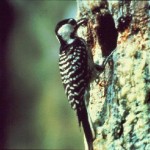 In July 2014, the UF/IFAS Center for Public Issues Education in Agriculture and Natural Resources (PIE Center) initiated a study to explore the attitudes, perceptions, opinions, and knowledge of Floridians on endangered and invasive species. The majority of respondents to the survey have favorable views of endangered species but few consider themselves knowledgeable on the issue. This 4-page fact sheet can equip Extension faculty to more effectively communicate with and educate clientele about endangered species. Written by Mary Hannah Miller, Nicole M.W. Dodds, & Alexa J. Lamm, and published by the UF Department of Agricultural Education and Communication, October 2014.
In July 2014, the UF/IFAS Center for Public Issues Education in Agriculture and Natural Resources (PIE Center) initiated a study to explore the attitudes, perceptions, opinions, and knowledge of Floridians on endangered and invasive species. The majority of respondents to the survey have favorable views of endangered species but few consider themselves knowledgeable on the issue. This 4-page fact sheet can equip Extension faculty to more effectively communicate with and educate clientele about endangered species. Written by Mary Hannah Miller, Nicole M.W. Dodds, & Alexa J. Lamm, and published by the UF Department of Agricultural Education and Communication, October 2014.
http://edis.ifas.ufl.edu/wc185
Engaging Consumers in At-Home Water Conservation: A Guide for Extension
 With a growing urban population and increased demands on water for recreational and agricultural purposes, Florida will have to identify a solution to its water quality and quantity issues. Although all Florida residents will play a part in conserving water in the future, the ability of Extension faculty to work with consumers and encourage new water conservation behaviors at home will be vital. This 4-page fact sheet provides information to Extension faculty about the water conservation behaviors in which Florida residents currently engage, water conservation product ownership, and public interest in water-related topics. Written by Caroline G. Roper and Alexa J. Lamm, and published by the UF Department of Agricultural Education and Communication, September 2014.
With a growing urban population and increased demands on water for recreational and agricultural purposes, Florida will have to identify a solution to its water quality and quantity issues. Although all Florida residents will play a part in conserving water in the future, the ability of Extension faculty to work with consumers and encourage new water conservation behaviors at home will be vital. This 4-page fact sheet provides information to Extension faculty about the water conservation behaviors in which Florida residents currently engage, water conservation product ownership, and public interest in water-related topics. Written by Caroline G. Roper and Alexa J. Lamm, and published by the UF Department of Agricultural Education and Communication, September 2014.
http://edis.ifas.ufl.edu/wc169
Extension and the Environment: Understanding Florida Residents' Perceptions of Environmental Water-Related Topics
 By understanding Florida residents’ perceptions of water quality and quantity issues, Extension faculty can better communicate with them about water quantity and quality issues. This 4-page fact sheet explores Florida residents’ perceptions of water topics related to environmental issues. Written by Caroline G. Roper and Alexa J. Lamm, and published by the UF Department of Agricultural Education and Communication, September 2014.
By understanding Florida residents’ perceptions of water quality and quantity issues, Extension faculty can better communicate with them about water quantity and quality issues. This 4-page fact sheet explores Florida residents’ perceptions of water topics related to environmental issues. Written by Caroline G. Roper and Alexa J. Lamm, and published by the UF Department of Agricultural Education and Communication, September 2014.
http://edis.ifas.ufl.edu/wc167
Communicating with Extension Clients about Water
 As the U.S. and Florida populations continue to increase and the demand for fresh, clean water rises, water quality and quantity issues will become increasingly important. Extension faculty should understand public opinion surrounding water issues and identify the information that needs to be communicated to the public about water issues, as well as the best mode for this communication. This EDIS publication will provide an overview of how to communicate with Florida residents about water, including information about their preferred communication method and what topics surrounding water Florida residents find of interest. This publication will better equip Extension faculty to discuss water quantity and quality issues with Florida residents. This 4-page fact sheet was written by Caroline G. Roper and Alexa J. Lamm, and published by the UF Department of Agricultural Education and Communication, June 2014.
As the U.S. and Florida populations continue to increase and the demand for fresh, clean water rises, water quality and quantity issues will become increasingly important. Extension faculty should understand public opinion surrounding water issues and identify the information that needs to be communicated to the public about water issues, as well as the best mode for this communication. This EDIS publication will provide an overview of how to communicate with Florida residents about water, including information about their preferred communication method and what topics surrounding water Florida residents find of interest. This publication will better equip Extension faculty to discuss water quantity and quality issues with Florida residents. This 4-page fact sheet was written by Caroline G. Roper and Alexa J. Lamm, and published by the UF Department of Agricultural Education and Communication, June 2014.
http://edis.ifas.ufl.edu/wc165
Grant Writing: Tips and Advice for New Writers
 While grant writing is a highly useful and potentially lucrative skill, it can also be a challenge to learn how to successfully write grants. Moving through the entire process of creating and harnessing a new idea to building a collaborative team, and making sure the proposal itself is high quality and includes all the important pieces can be daunting for new grant writers. This 5-page fact sheet shares tips and walks you through the process of writing a collaborative grant by helping illuminate how to manage the idea creation, team building, and proposal writing stages of your grant writing experience. Written by Erica Odera, Sebastian Galindo-Gonzalez, Amy Harder, Glenn D. Israel, and Alexa J. Lamm, and published by the UF Department of Agricultural Education and Communication, May 2014.
While grant writing is a highly useful and potentially lucrative skill, it can also be a challenge to learn how to successfully write grants. Moving through the entire process of creating and harnessing a new idea to building a collaborative team, and making sure the proposal itself is high quality and includes all the important pieces can be daunting for new grant writers. This 5-page fact sheet shares tips and walks you through the process of writing a collaborative grant by helping illuminate how to manage the idea creation, team building, and proposal writing stages of your grant writing experience. Written by Erica Odera, Sebastian Galindo-Gonzalez, Amy Harder, Glenn D. Israel, and Alexa J. Lamm, and published by the UF Department of Agricultural Education and Communication, May 2014.
http://edis.ifas.ufl.edu/wc161
Water Issues in Florida: How Extension Can Facilitate Stakeholder Engagement and Involvement
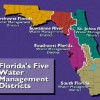 This 6-page fact sheet is a brief description of recent discussions and policies surrounding water management, use, and quality in Florida. The goal of this publication is to provide brief, but clear, information about the trends in policies that can be used by Extension agents to increase educated conversations about water issues. Water in Florida is a contested issue, and Extension agents may be called upon as a source of unbiased information by the public. Having an understanding of important agricultural and natural resources issues in Florida, including water, can help facilitate conversation, raise awareness, and lead to informed decision making. Written by Erica Odera, Alexa Lamm, Tracy Irani, Hannah Carter, and Sebastian Galindo-Gonzalez, and published by the UF Department of Agricultural Education and Communication, December 2013.
This 6-page fact sheet is a brief description of recent discussions and policies surrounding water management, use, and quality in Florida. The goal of this publication is to provide brief, but clear, information about the trends in policies that can be used by Extension agents to increase educated conversations about water issues. Water in Florida is a contested issue, and Extension agents may be called upon as a source of unbiased information by the public. Having an understanding of important agricultural and natural resources issues in Florida, including water, can help facilitate conversation, raise awareness, and lead to informed decision making. Written by Erica Odera, Alexa Lamm, Tracy Irani, Hannah Carter, and Sebastian Galindo-Gonzalez, and published by the UF Department of Agricultural Education and Communication, December 2013.
http://edis.ifas.ufl.edu/wc151
Speaking with Policymakers About Current Issues
 The future of the agricultural and natural resource industry requires that educators, industry professionals, and policymakers work together when addressing contentious issues. However, discussing contentious issues with policymakers at the local, state, and national level is not always an easy task. Policymakers in general are busy people with many issues competing for their limited time. Once in the door, it is important to deliver strong messages in the right way for the policymaker to listen and use your information when making important decisions. This 2-page fact sheet discusses the differences between education and persuasion and when to use each, offers information on how to make presentations that will get their attention, and identifies things to avoid when visiting with a policymaker. Written by Alexa J. Lamm, and published by the UF Department of Agricultural Education and Communication, August 2013.
The future of the agricultural and natural resource industry requires that educators, industry professionals, and policymakers work together when addressing contentious issues. However, discussing contentious issues with policymakers at the local, state, and national level is not always an easy task. Policymakers in general are busy people with many issues competing for their limited time. Once in the door, it is important to deliver strong messages in the right way for the policymaker to listen and use your information when making important decisions. This 2-page fact sheet discusses the differences between education and persuasion and when to use each, offers information on how to make presentations that will get their attention, and identifies things to avoid when visiting with a policymaker. Written by Alexa J. Lamm, and published by the UF Department of Agricultural Education and Communication, August 2013.
http://edis.ifas.ufl.edu/wc152
A Cooperative Agreement and the Implementation of the Endangered Species Act: How Extension Can Facilitate Stakeholder Involvement and Compliance
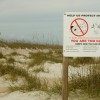 This 4-page fact sheet provides a brief description of the Endangered Species Act and updated action pertaining to the endangered species issue. The goal of this publication is to provide brief but clear information about the legislation and current agreements around this issue that Extension agents can use to increase educated conversations. Written by Chandra Bowden, Alexa Lamm, Tracy Irani, and Sebastian Galindo, and published by the UF Department of Agricultural Education and Communication, May 2013.
This 4-page fact sheet provides a brief description of the Endangered Species Act and updated action pertaining to the endangered species issue. The goal of this publication is to provide brief but clear information about the legislation and current agreements around this issue that Extension agents can use to increase educated conversations. Written by Chandra Bowden, Alexa Lamm, Tracy Irani, and Sebastian Galindo, and published by the UF Department of Agricultural Education and Communication, May 2013.
http://edis.ifas.ufl.edu/wc141
